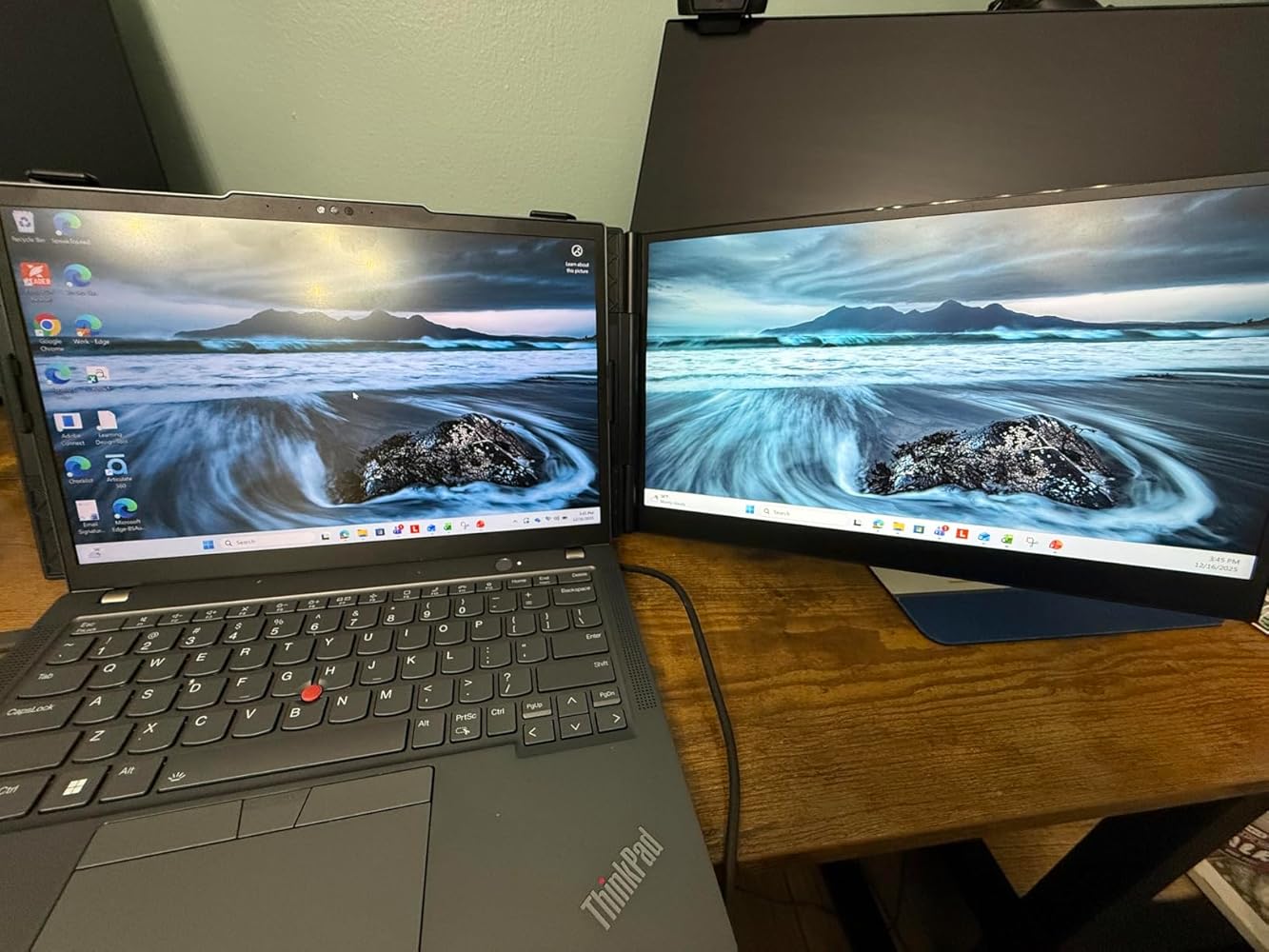How to Choose the Right Monitor for Work & Gaming
Choosing the right monitor is essential for productivity, gaming, design work, and overall user comfort. Whether you’re setting up a home office, a gaming station, or a creative workspace, the right monitor can enhance your experience and efficiency.
But how do you choose the best monitor for your needs? Should you go for 24 inches or 27 inches? Is 4K necessary? Should you invest in OLED, QLED, or LCD? If you need more screen space, is it better to buy a second monitor or a portable screen extender?
This guide will cover everything you need to know about choosing a monitor, including size, resolution, refresh rate, and whether portable screen extenders like P5 Dual Laptop Screen Extender can be a better alternative to a bulky dual-monitor setup.
Part 1: What Are the Key Factors to Consider When Buying a Monitor?
1.1 Screen Size – 24”, 27”, or Ultrawide?
Choosing the right screen size depends on your workspace, use case, and personal preference:
- 24-inch monitors – Great for small desks, basic office work, and reading documents.
- 27-inch monitors – Ideal for multitasking, spreadsheets, and professional work.
- Ultrawide monitors (34” and above) – Perfect for video editing, stock trading, and data analysis.
📌 Need more screen space but don’t want a second fixed monitor?
A portable dual-screen extender like P5 Dual Laptop Screen Extender gives you the benefits of a dual-screen setup without extra desk space.
1.2 Resolution – Is 4K Worth It?
- 1080p (Full HD) – Sufficient for most tasks.
- 1440p (2K, QHD) – Offers sharper visuals, ideal for long working hours.
- 4K (UHD) – Best for graphic designers, video editors, and professionals working with high-resolution content.
📌 If you frequently switch between Excel sheets, emails, and presentations, a higher-resolution monitor helps—but what if you need even more workspace?
Aportable screen extender like Z2 Triple Laptop Screen Extender offers a three-screen setup to boost productivity without requiring a second bulky monitor.
1.3 Refresh Rate – Is 60Hz Enough?
- 60Hz – Standard for most office monitors.
- 75Hz – 120Hz – Smoother scrolling and better experience for fast-moving content.
- 144Hz+ – Recommended for gaming and professional video editing.
For most tasks, 60Hz is enough, but if you want smoother performance, a 75Hz or 120Hz monitor is a better option.
1.4 Panel Type – IPS vs. OLED vs. VA
- IPS (In-Plane Switching) – Best for office work, color accuracy, and viewing angles.
- VA (Vertical Alignment) – Higher contrast but narrower viewing angles.
- OLED – High-end option with deeper blacks and vibrant colors but expensive.
📌 For most users, IPS panels provide the best balance of performance, price, and comfort.
1.5 Eye Comfort – How to Reduce Eye Strain?
If you work long hours, consider:
✔Low Blue Light Mode – Reduces eye fatigue.
✔Flicker-Free Technology – Prevents screen flickering.
✔Adjustable Monitor Stands – Helps improve posture and ergonomic positioning.
📌 A portable screen extender at an adjustable height can improve posture and comfort while increasing productivity.
S6 Triple Laptop Screen Extender provides a flexible, high-performance multi-screen solution.
Part 2: Is a 27-Inch Monitor Too Big for Office Work?
- 27” monitors are great for multitasking and larger workspaces but may feel overwhelming on small desks.
- Proper viewing distance (at least 24 inches from your eyes) is essential for comfort.
📌 If you want extra screen space but feel a 27” monitor is too large, a portable dual-screen extender is a better option.
Z2 Triple Laptop Screen Extender gives you three screens while keeping your setup compact.
Part 3: OLED vs. LCD vs. QLED – Which One Should You Choose?
- OLED – Stunning contrast and deep blacks but expensive and prone to burn-in.
- LCD (IPS) – Best for general office work and gaming.
- QLED – Higher brightness, great for HDR content.
📌 If OLED is too expensive but you need more screen space, consider a portable screen extender as an alternative.
S6 Triple Laptop Screen Extender provides an expandable workspace without the high cost of OLED displays.
Part 4: Curved vs. Flat Monitors – Which Is Better for Work?
Curved Monitors
✔ More immersive
✔ Reduces eye strain
❌ More expensiveFlat Monitors
✔ More practical forproductivity & office work
✔ More budget-friendly📌 For office work, flat monitors are often more practical.
If you need extra screen space, a triple-screen extender like Z2 Triple Laptop Screen Extender is a better choice.
Part 5: Best Monitors for Different Use Cases
|
Usage |
Recommended Size |
Best Model |
|
Office & Document Work |
24” |
Dell P2422H |
|
Multitasking & Productivity |
27” |
LG 27UN850 |
|
Ultra-Wide Workstation |
34”+ Ultrawide |
Dell U3421WE |
|
Portable Dual Screen |
Compact Workspace |
|
|
Triple-Screen Workstation |
Power Users |
Conclusion – What’s the Best Choice for You?
✔ For general work, a 24” monitor is enough.
✔For multitasking, a 27” monitor is ideal.
✔For immersive workflows, an ultrawide monitor is great but expensive.
✔For portable multi-screen setups, Cevaton screen extenders are a better alternative to a bulky dual-monitor setup.
📌 Recommended Solutions:
- P5 Dual Laptop Screen Extender – Best portable dual-screen
- Z2 Triple Laptop Screen Extender – Ultimate triple-screen extender.
- S6 Triple Laptop Screen Extender – Best for flexible, high-performance setups.

